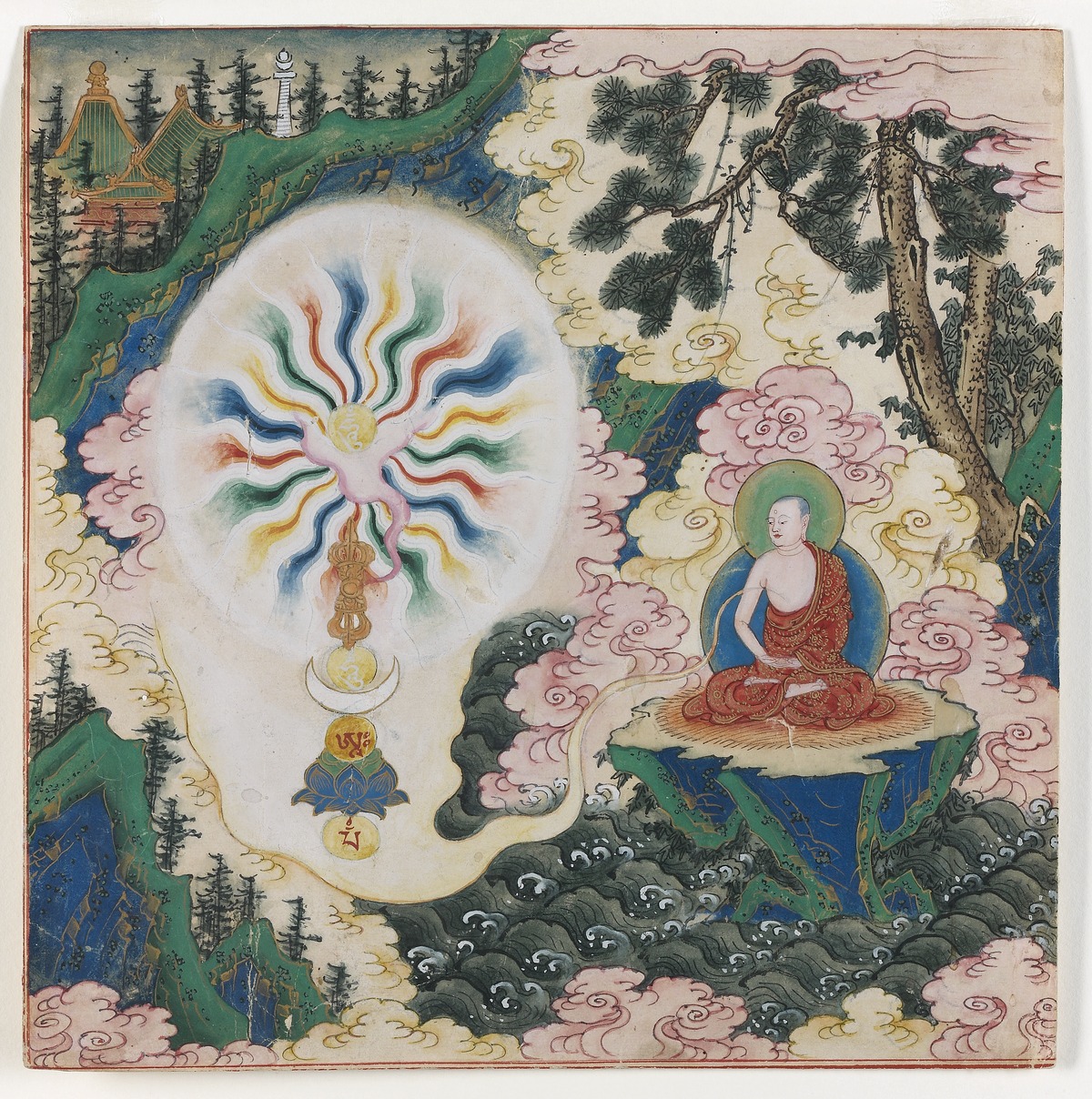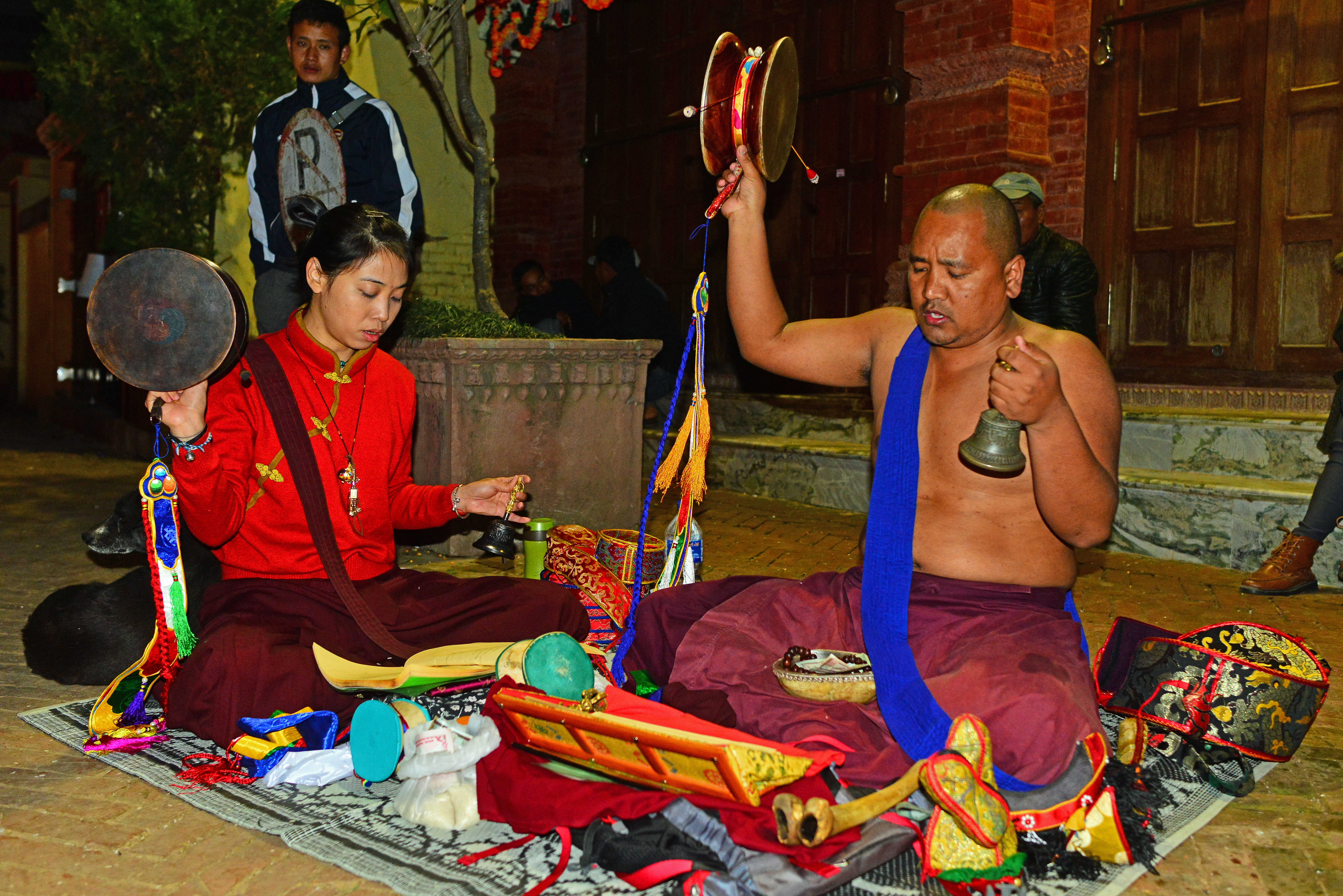|
Longchen Nyingtig
Longchen Nyingthig () is a '' terma'', revealed scripture, of the Nyingma school of Tibetan Buddhism, which gives a systematic explanation of Dzogchen. It was revealed by Jigme Lingpa (1730–1798). Etymology Longchen Nyingthig may be translated as 'seminal heart of Longchenpa', or 'vast expanse heart essence', a reference to the central figure of Jigme Lingpa's 'pure visions' () in which the texts were revealed. 'Nyingthig' (which connotes 'seminal essence' or 'heart focus'). 'Thig' is an etymon of 'thig-le' which is the Tibetan translation of the Sanskrit ' bindu', the central point of the 'mandala' (Tibetan: khorlo). Alternate orthographies: Longchen Nyingtik. History and background Dzogchen teachings have been classified in three sections namely: Semde (mind class/cycle); Longdé (space class/cycle); and Mengagde (direct/oral instruction class/cycle). Shri Singha divided the Mengagde into a further four cycles: the outer, inner, esoteric, and innermost esoteric cycle. The ... [...More Info...] [...Related Items...] OR: [Wikipedia] [Google] [Baidu] |
Nyingma Jigme Lingpa
Nyingma (literally 'old school') is the oldest of the four major schools of Tibetan Buddhism. It is also often referred to as ''Ngangyur'' (, ), "order of the ancient translations". The Nyingma school is founded on the first lineages and translations of Buddhist scriptures from Sanskrit into Tibetic languages, Tibetan in the eighth century, during the reign of King Trisong Detsen (r. 710–755). Nyingma traditional histories consider their teachings to trace back to the Adi-Buddha, first Buddha Samantabhadra (Güntu Sangpo) and Indian mahasiddhas such as Garab Dorje, Garab Dorjé, Sri Singha, Śrī Siṃha and Jnanasutra, Jñānasūtra. Traditional sources trace the origin of the Nyingma order in Tibet to figures associated with the initial introduction of Buddhism in the 8th century, such as Padmasambhāva, Padmasambhava, Yeshe Tsogyal, Vimalamitra, Vairotsana, Buddhaguhya and Śāntarakṣita, Shantaraksita. The Nyingma tradition is also seen having been founded at Samye, Samy ... [...More Info...] [...Related Items...] OR: [Wikipedia] [Google] [Baidu] |
Vimalamitra
Vimalamitra () was an 8th-century Indian Buddhist monk. His teachers were Buddhaguhya, Jñānasūtra and Śrī Siṃha. He was supposed to have vowed to take rebirth every hundred years, with the most notable figures being Rigzin Jigme Lingpa, Khenchen Ngagchung, Kyabje Drubwang Penor Rinpoche and Kyabje Yangthang Rinpoche. He was one of the eight teachers of the great Indian adept Guru Padmasambhava. Centuries later, terma and various works were attributed to him. Chatral Sangye Dorji (1913-2016) was said to have received a mala rosary from a man who was at the time dressed as an Indian Sadhu. It was only later that Rinpoche told his attendants that he received a mala on that day from Vimalamitra in reality. The attendants were curious and returned to the place where they had met a sadhu only to be left dumbstruck. The sadhu was not to be found anywhere. One scholar remarked that the historical Vimalamitra "would have been astonished to find himself the focus of such a tradit ... [...More Info...] [...Related Items...] OR: [Wikipedia] [Google] [Baidu] |
Yidam
''Yidam'' is a type of deity associated with tantric or Vajrayana Buddhism said to be manifestations of Buddhahood or enlightened mind. During personal meditation (''sādhana'') practice, the yogi identifies their own form, attributes and mind with those of a yidam for the purpose of transformation. Yidam is sometimes translated by the terms "meditational deity" or "tutelary deity". Examples of yidams include the meditation deities Chakrasamvara, Kalachakra, Hevajra, Yamantaka, and Vajrayogini, all of whom have a distinctive iconography, mandala, mantra, rites of invocation and practice. In Vajrayana, the yidam is one of the three roots of the inner refuge formula and is also the key element of deity yoga since the 'deity' in the yoga is the yidam. Etymology Yidam is said to be a contraction of Tib. ''yid-kyi-dam-tshig'', meaning "samaya of mind" or in other words, the state of being indestructibly bonded with the inherently pure and liberated nature of mind. This is said ... [...More Info...] [...Related Items...] OR: [Wikipedia] [Google] [Baidu] |
Dakini
A ḍākinī ( sa, डाकिनी; ; mn, хандарма; ; alternatively 荼枳尼, ; 荼吉尼, ; or 吒枳尼, ; Japanese: 荼枳尼 / 吒枳尼 / 荼吉尼, ''dakini'') is a type of female spirit, goddess, or demon in Hinduism and Buddhism. The concept of the ḍākinī somewhat differs depending on the context and the tradition. For instance, in earlier Hindu texts and East Asian esoteric Buddhism, the term denotes a race of demonesses who ate the flesh and/or vital essence of humans. In Hindu Tantric literature, Ḍākinī is the name of a goddess often associated with one of the six chakras or the seven fundamental elements ('' dhātu'') of the human body. In Nepalese and Tibetan Buddhism, meanwhile, 'ḍākinī' (also wisdom ḍākinī) can refer to both what can be best described as fierce-looking female embodiments of enlightened energy and to human women with a certain amount of spiritual development, both of which can help Tantric initiates attaining enli ... [...More Info...] [...Related Items...] OR: [Wikipedia] [Google] [Baidu] |
Sam Van Schaik
Sam Julius van Schaik is an English tibetologist. Education He obtained a PhD in Tibetan Buddhist literature at the University of Manchester in 2000, with a dissertation on the translations of Dzogchen texts by Jigme Lingpa. Career Since 1999 he has worked at the British Library in London, and is currently a project manager for the International Dunhuang Project, specialising in the study of Tibetan Buddhist manuscripts from Dunhuang. He has also taught occasional courses at SOAS, University of London. From 2003 to 2005 van Schaik worked on a project to catalogue Tibetan Tantric manuscripts in the Stein Collection of the British Library, and from 2005 to 2008 he worked on a project to study the palaeography of Tibetan manuscripts from Dunhuang, in an attempt to identify individual scribes. In February 2019 van Schaik was appointed as the head of the Endangered Archives Programme at the British Library. Books Van Schaik is the author or co-author of: * ''Approaching the ... [...More Info...] [...Related Items...] OR: [Wikipedia] [Google] [Baidu] |
Completion Stage
The fundamental practice of Vajrayana and Tibetan tantra is deity yoga (''devatayoga''), meditation on a chosen deity or "cherished divinity" (Skt. ''Iṣṭa-devatā,'' Tib. ''yidam''), which involves the recitation of mantras, prayers and visualization of the deity, the associated mandala of the deity's Buddha field, along with consorts and attendant Buddhas and bodhisattvas. According to the Tibetan scholar Tsongkhapa, deity yoga is what separates Tantra from Sutra practice. In the Unsurpassed Yoga Tantras, the most widespread tantric form in Indo-Tibetan Buddhism, this method is divided into two stages, the generation stage (''utpatti-krama'') and the completion stage (''nispanna-krama''). In the generation stage, one dissolves one's reality into emptiness and meditates on the deity-mandala, resulting in identification with this divine reality. In the completion stage, the divine image along with the subtle body is applied to the realization of luminous emptiness. The In ... [...More Info...] [...Related Items...] OR: [Wikipedia] [Google] [Baidu] |
Generation Stage
The fundamental practice of Vajrayana and Tibetan tantric practice, Tibetan tantra is deity yoga (''devatayoga''), meditation on a chosen deity or "cherished divinity" (Skt. ''Iṣṭa-devatā,'' Tib. ''yidam''), which involves the recitation of mantras, prayers and visualization of the deity, the associated mandala of the deity's pure land, Buddha field, along with consorts and attendant Buddhas and bodhisattvas. According to the Tibetan scholar Tsongkhapa, deity yoga is what separates Tantra from Sutra practice. In the Unsurpassed Yoga Tantras, the most widespread tantric form in Indo-Tibetan Buddhism, this method is divided into two stages, the generation stage (''utpatti-krama'') and the completion stage (''nispanna-krama''). In the generation stage, one dissolves one's reality into emptiness and meditates on the deity-mandala, resulting in identification with this divine reality. In the completion stage, the divine image along with the subtle body is applied to the realizat ... [...More Info...] [...Related Items...] OR: [Wikipedia] [Google] [Baidu] |
Dilgo Khyentse Rinpoche
Tashi Paljor, Dilgo Khyentse Rinpoche () (c. 1910 – 28 September 1991) was a Vajrayana master, scholar, poet, teacher, and recognized by Buddhists as one of the greatest realized masters. Head of the Nyingma school of Tibetan Buddhism from 1988 to 1991, he is also considered an eminent proponent of the Rime tradition. As the primary custodian of the teachings of Jamyang Khyentse Wangpo, Dilgo Khyentse was the de facto custodian of the vast majority of Tibetan Buddhist teachings. He taught many eminent teachers, including the Dalai Lama. After the Chinese invasion of Tibet, his personal effort was crucial in the preservation of Tibetan Buddhism. Biography Early life, ancestry He was born in 1910 in the Denhok Valley at Kham Derge, Eastern Tibet, to a family directly descended from the ninth-century King Trisong Detsen. His father was a minister to the King of Derge. When he was seven years old, he was publicly recognized as one of the reincarnations of Jamyang Khyentse Wangpo ... [...More Info...] [...Related Items...] OR: [Wikipedia] [Google] [Baidu] |
Tulku
A ''tulku'' (, also ''tülku'', ''trulku'') is a reincarnate custodian of a specific lineage of teachings in Tibetan Buddhism who is given empowerments and trained from a young age by students of his or her predecessor. High-profile examples of tulkus include the Dalai Lamas, the Panchen Lamas, the Samding Dorje Phagmos, the Karmapas, Khyentses, the Zhabdrung Rinpoches, and the Kongtruls. Nomenclature and etymology The word སྤྲུལ or 'sprul' (Modern Lhasa Tibetan ) was a verb in Old Tibetan literature and was used to describe the བཙན་པོ་ btsanpo ('emperor'/天子) taking a human form on earth. So the ''sprul'' idea of taking a corporeal form is a local religious idea alien to Indian Buddhism and other forms of Buddhism (e.g. Theravadin or Zen). Over time, indigenous religious ideas became assimilated by the new Buddhism; e.g. ''sprul'' became part of a compound noun, སྤྲུལ་སྐུ་'sprul.sku' ("incarnation body" or 'tülku', and 'btsan' ... [...More Info...] [...Related Items...] OR: [Wikipedia] [Google] [Baidu] |




